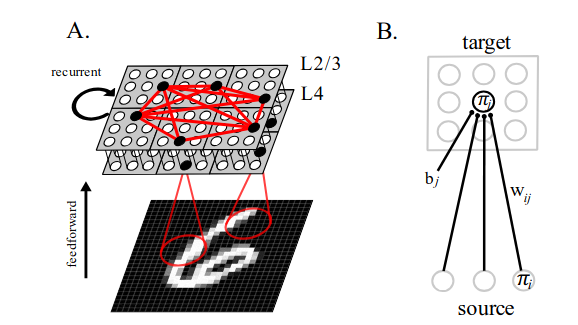ENCCS is collaborating with researchers from KTH Royal Institute of Technology to support the development and optimisation of BCPNNSim2.0, an advanced software tool for brain-like machine learning and neural simulations. This effort is part of the EU-funded EXTRA-BRAIN project and SeRC (Swedish e-Science Research Centre) funded Brain-IT projects. The aim is to evaluate BCPNN technology in real-world ML applications, including robotics, telecommunications, and financial technology.
Pioneering Brain-Like ML Technology
BCPNNSim2.0 is built on Bayesian Confidence Propagation Neural Networks (BCPNN), a model rooted in decades of research into computational brain science. Mainstream ML approaches rely on backpropagation and synchronized global computation. BCPNN, instead, employs localised memory access and parallel, asynchronous computation at the synapse level. This approach is inherently scalable and energy-efficient. This design enables unsupervised learning, continuous adaptation to streaming data, and robustness to untrained noise. Such features are critical for real-world applications.
The latest version of the software introduces structural plasticity, enabling networks to rewire dynamically during learning, akin to the human brain. Moreover, It also supports spiking neural units, enhancing its capacity for temporal data processing and sequence learning. These capabilities position BCPNNSim2.0 as a versatile tool for applications from associative memory modeling to advanced ML.
Technical Advancements and ENCCS Support
The development of BCPNNSim2.0 focuses on maximising scalability and performance on modern HPC systems. ENCCS, jointly with experts from AMD, is assisting with the parallelisation and optimisation of the code, leveraging expertise in distributed MPI-GPU programming. These enhancements will enable simulations of large-scale spiking brain models, potentially achieving real-time speeds on advanced HPC platforms like LUMI.
Key improvements include:
• Packing sparse and dynamic network structure for dense matrix operations for GPU processing.
• Introducing delayed communication for handling temporal data.
• Exploring efficient data formats like half-precision and “bfloat16” for computational efficiency.
• Ensuring scalability to hundreds of HPC nodes for large-scale simulations, such as modeling cortical associative memory at the size of a rat brain.
A Path Towards Commercialisation
The EXTRA-BRAIN project, coordinated by KTH (Prof. Pawel Herman), not only aims to refine BCPNNSim2.0 but also lays the groundwork for its commercial application. With the involvement of ENCCS and industry experts, the project envisions transferring this cutting-edge technology to sectors requiring robust, real-time ML solutions.
By supporting the development of BCPNNSim2.0, ENCCS is playing a critical role in bridging the gap between neuroscience and machine learning, enabling breakthroughs that could transform both research and industry. Stay tuned as this exciting project continues to unfold and push the boundaries of brain-like computing.
For more information about BCPNNSim2.0 visit the project’s repository or contact Anders Lansner at KTH.

Do you need more computational power for your projects?
Learn more about how you can access supercomputers for your projects. ENCCS can help! Visit https://enccs.se/get-supercomputer-access/








